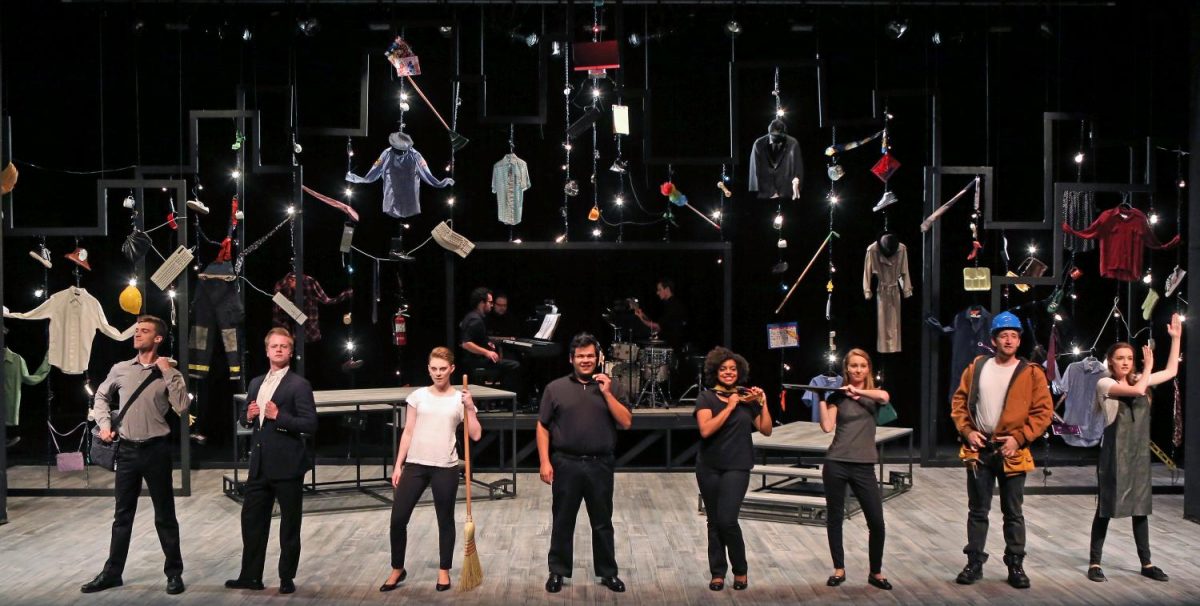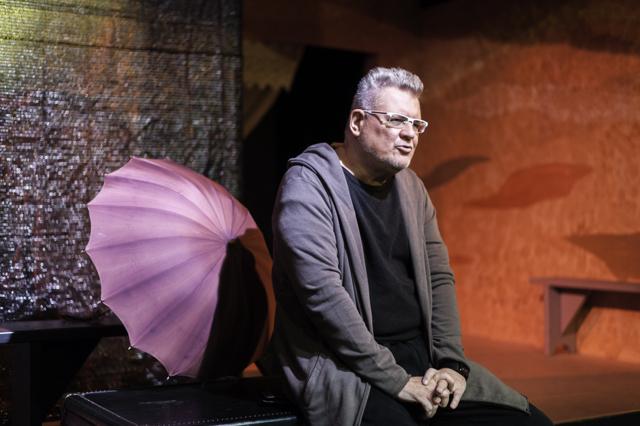“To Kill a Mockingbird,” a story set in the 1930s yet is increasingly relevant today, will be Marquette Theatre’s annual social justice-focused production. The production opens its curtains on Thursday, Nov. 12th and will run until the 22nd.
Through the intimate and episodic storytelling, “Mockingbird” tackles tough issues of race relations and corrupt justice systems. Putting on this production is no easy task, but it’s one that director Jamie Cheatham feels is an important one.
“It just seemed like the right time to do this play with our past year — with Ferguson and Black Lives Matter and the rise of our social consciousness of this disparity in our criminal justice system,” Cheatham said. “I think this play talks to that. Perhaps in a very mild way, but it seemed like a really good piece to choose for our campus and to talk about those issues.”
The story will most likely be a familiar one for most students. Harper Lee’s novel detailing Scout Finch’s adventures in Maycomb, Alabama, with her brother, Jem, and her father, Atticus, have been discussed at length in classrooms, made into award-winning cinema and been given a sequel. But Cheatham is hopeful that seeing the story performed live, with all the nuances he and the actors have given the production, will prove to be an entirely new and gratifying experience for the audience.
“I’m absolutely committed to honoring Harper Lee’s novel, the story and the characters,” Cheatham said. “But I’m trying to bring out the theme (of racial injustice) without being heavy-handed.”
Cheatham has approached the production with the fleeting and ephemeral nature of theater in mind. He wants to do justice to the original story while allowing the audience to become aware of the larger issues. One way he has done this is by adapting his interpretation of the script to address the issue of a lack of African American voices in the play.
“Unfortunately in a story about race, these characters don’t get much of a voice,” Cheatham said. “There’s a black choir that comes in early, and they make several appearances as part of scene changes. So the African American voice has been raised, amplified a little bit, I hope, in this production. I think audiences will pick up on that without it being a distraction.”
The performance will also incorporate talk-back sessions with figures in the Marquette community who will discuss the story through various lenses. A standalone presentation by Reggie Jackson of America’s Black Holocaust Museum titled, “To Kill a Mockingbird from an African-American Perspective” will also be held Nov. 16.
“We have invited speakers from campus as well as Mr. Jackson to help enrich the production and the audience’s educational experience,” Chair of Digital Media and Performing Arts, Stephen Hudson-Mairet said. “All of our theater and social justice productions work to link a dramatic production to current events. It is a way to make theater come alive for our audiences.”
The actors themselves dove headfirst into this difficult and heavy material. Not only does the play focus on racial injustice, it also speaks to the ideas of innocence, courage and the struggles of living in a world you don’t fully understand or that doesn’t understand you.
The production’s Jem, A.J. Magoon, a sophomore in the College of Communication, is excited about the unique role his character and all the children play in this larger complex narrative.
“All three of the kids fill that role of being as much of the audience’s perspective as possible,” Magoon said. “It’s good that the play centers around children because it gives you an impartial look into what are otherwise pretty controversial matters, without any preconceived notions.”
If the kids are the lens through which these injustices are seen, Atticus Finch acts as the moral center of the play. Michael Cienfuegos-Baca, a senior in the College of Communication, has the particular challenge of embodying a character so many are familiar with as an icon of fatherhood and steadfast principles.
“It’s fun,” Cienfuegos-Baca said. “But it’s nerve-wracking to think that he’s a man that everybody knows but nobody’s met.”
Direction from Cheatham, along with his own personal research, has helped Cienfuegos-Baca find those parts of Atticus that perhaps the audience hasn’t “met” yet. He’s changed various aspects of his own acting throughout rehearsals — from the way he stands (he tends to look tall and proud when he should look weary), to learning to naturally fiddle with a pocket watch, to the way Cheatham has directed him to speak to Jem and Scout as if they were adults rather than children — all in order to convey to the audience his unique and fully-realized version of Atticus on the stage.
“It’s really about finding those physical moments,” Cienfuegos-Baca said. “Finding what roles Atticus plays and really trying to find the similarities, the parallels, from Michael to Atticus, where we meet, where we’re different and how I can find a relatable moment.”
The courtroom scene that is at the center of the production highlights the intricacies of Cienfuegos-Baca’s Atticus and the relationship he has to create with Isayah Phillips, a recent graduate from Georgetown who has been brought on to play Tom Robinson.
“Working with Michael has been genuine,” Phillips said. “Every time the court scene is performed I feel as if we are discovering new ways to capture that authenticity between both characters.”
An aspect of the set design plays into the interesting dynamic between Cienfuegos-Baca and his “kids,” Madeleine Farley, a junior in the College of Communication who plays Scout, and Magoon. The stage itself is constructed so that every time Atticus is speaking to Jem, Magoon is one step lower physically than Cienfuegos-Baca.
Those little details, along with a clear understanding of the characters, helps to solidify these relationships which are so fundamental to the story.
“When you are comfortable as actors with each other on stage, like I believe A.J., Madeleine and myself are, it really opens up possibilities to make it real.” Cienfuegos-Baca said.
The story hinges on those relationships, and it is in them that the audience can see the full effect of racial injustice in this town. Despite the period setting, this production hopes to hit uncomfortably close to home for the audience.
“We’re trying to make it real for the audience in as many ways as possible,” Farley said. “We want to scare the audience in some respects. We want them to be like, ‘this isn’t (just) 1935, this is 2015.’”
Cheatham also wants the audience to come out of the production thinking about the impact of those big issues the play addresses.
“I hope that it makes the audience think about, that for all our progress, some things have not changed,” Cheatham said. “That should rankle a little bit. It’s a gentle reminder, but hopefully it’s one that the audience does think about.”


